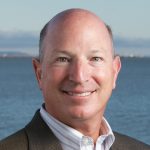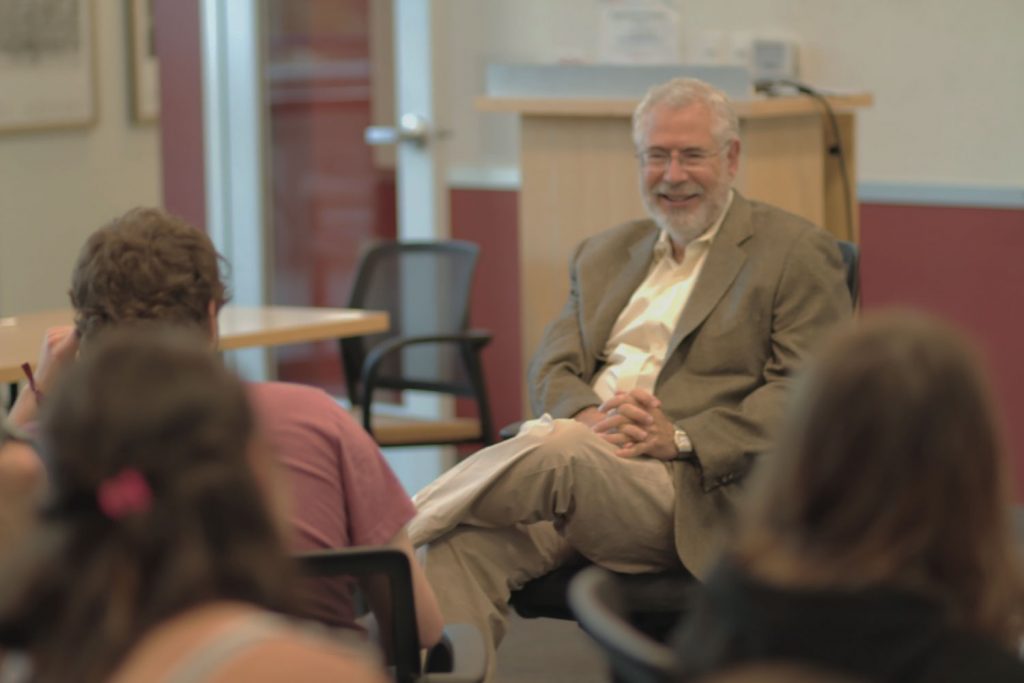Here’s the idea: Moober — Uber for cows. Trailers would drive around and pick up cattle from family farms, bring them to the slaughterhouse and solve the problem of bottlenecks at the facility.
It was clever, addressed a real problem and had the hip name to boot. And yet, when Stanford graduate student Christine Su shared the idea with the instructor of the course Engineering 245 — Steve Blank, the renowned father of the “Lean LaunchPad” approach — he predicted it wouldn’t work. Then he told Su to see for herself by going out and talking to actual ranchers.
It didn’t take long: The first farmer Su spoke with spent two years lovingly raising and fattening her cows and would not think of cramming them into a trailer with other baffled bovine. It would stress them out and cause the release of hormones and lactic acid that would, ironically, degrade the quality of the meat.
Fortunately, that was only one of many ideas Su pitched, and her team eventually worked on a project that has since developed into a truly unique startup: a mobile app that allows farmers to manage their fields and monitor grazing.
“One of the most invigorating things about Steve’s class is getting proven that you’re wrong,” said Su, who expects to earn a joint master’s degree in business and land use and agriculture at the end of the 2014-15 school year. “As Steve says, every time you’re proven wrong, you’ve just saved your family, your friends and your investors tens of thousands of dollars.”
As any entrepreneur or investor in the tech-startup scene now knows, the Lean LaunchPad methodology boils down to several key components:
- proposing a business opportunity in the form of a “hypothesis” about a need in the market
- defining the essential building blocks for the proposed business (key partners and resources, customer segments, revenue streams, etc.)
- quickly testing the assumptions about the market and customer needs by getting out and talking to lots of people
- adjusting the product or service based on all the feedback, and then launching a “minimum viable product.”
From there, continued feedback intake drives product improvement and, if necessary, any changes in the direction of the business — nowadays known as a “pivot.”
Experiential Learning
The methodology is a reversal of the traditional approach to entrepreneurship, which historically meant developing a business plan behind a desk, pitching it to investors, forming a team, building the product and then selling as hard as possible. Blank’s method reduces the high, upfront costs that would normally come with developing and perfecting a product before debuting it to the world.
“The goal isn’t to be an incubator,” said Blank, adding that those kind of resources abound at Stanford. “Take this class if you actually want to change your life as an entrepreneur — because we’re going to teach you a basic set of skills about how to be incredibly efficient with your time and money.”
The course, titled “The Lean LaunchPad: Getting Your Lean Startup Off the Ground,” is offered in Winter Quarter with limited enrollment. Graduate students must apply in teams, typically comprising three to five members, and present the business ideas that will serve as their class project, as well as be interviewed by the course’s instructors.
The course (ENGR 245) is one of many presented by the Stanford Technology Ventures Program (STVP), the entrepreneurship center in the universityʼs School of Engineering. Housed in the school’s Department of Management Science & Engineering, STVP is a lab for creating and delivering courses, performing research and developing tools and programs to accelerate entrepreneurship education.

Teaching ENGR 245 with Blank is Jeff Epstein, an operating partner at Bessemer Venture Partners and former CFO of Oracle. “What we do in the course is give you a very rich environment of resources,” said Epstein, citing the online lectures, in-class discussions, and mentors and advisors who also make themselves available to students. “Altogether, it gives you a very hands-on laboratory experience that’s as close as you can get to building a real company in a classroom setting.”
A defining aspect of ENGR 245 is its emphasis on getting lots of feedback from actual people: Over the course’s 10 weeks, teams are required to talk to a minimum of 10 individuals per week in person or by phone. For both the business school students and those from engineering who typically make up a team in the class, the constant stream of feedback is both grueling and rewarding.
“If you think about it, most entrepreneurs probably haven’t spoken with 100 customers and partners and suppliers,” Epstein said. “It’s a big investment in time, and there’s a huge payoff by doing it because what you learn each week as you develop your own idea of what your product is and what your company is, you learn more and more about what people want.”
That was definitely the case for Su and her teammate Jennifer Tsau. A digital native, acknowledged “foodie” and advocate for sustainable farming, Su and her team set out to do something in information management for farmers. They would take turns going to farmers’ markets, driving out to Tulare and Fresno, and even cold-calling trade associations for fruit growers, dairy farmers and cattle ranchers.
Over and over again, they got feedback affirming the need for an information-management solution, which led them to develop software that is now at the heart of their startup, Summer Technologies. Their app, currently in private beta mode, allows ranchers to create and save fields by tracing boundaries with their finger on a tablet or smart-phone screen. Farmers can also take geo-tagged photos, record grass heights and save notes before and after grazing.
“Years to come, no matter whether you become an entrepreneur or not, I think in every level of business or technology, user-centric design and empathy are really important,” Su said. “I’m getting a degree in agriculture, and I think I learned the most about agriculture in this course.”
For another entrepreneur who took ENGR 245, his startup also stems from food. As a child back in Berlin, Michael Heinrich spent a lot of time in his grandmother’s organic garden, picking and enjoying ripe raspberries, succulent apples and other fresh fruit. Contrast that with the highly processed snacks that surrounded him when he came to the United States as an adult to work in corporate offices and attend Stanford as a graduate student in management science and engineering.
So when he walked into the Lean LaunchPad course in winter 2014, he set out to build a startup that would produce and supply healthy snacks in the type of settings that he and his teammates found themselves in most – college campuses. But they quickly discovered, by getting out and talking to 10 to 15 people each week, that sales based on a typical university’s pace of purchasing would not sustain a business very well.
They also realized that focusing on college campuses would limit their market. So they pivoted and turned from higher education to targeting high-tech companies. Those epiphanies and many others have paid off, and now, Heinrich’s startup is on the road to sustainable success: “Oh My Green!” (omg!) counts Apple, IDEO and Levi Strauss & Co. among its biggest clients.
“The course has completely changed my trajectory as an entrepreneur,” said Heinrich, whose business is now growing from within the StartX accelerator program. “Steve and the teaching team are just fabulous. They offer a bit of tough love sometimes. But they really invest all of their time because they fundamentally believe and value the students – and they want to see them succeed.”
National Recognition
So powerful and proven is the Lean LaunchPad approach that it has been adopted by the National Science Foundation and the National Institutes of Health as a training program called Innovation Corps (I-Corps). According to Blank, government officials in Washington, D.C., see the emphasis on testing a hypothesis and gathering data as a “scientific formula” for innovation that NSF and NIH scientists can apply toward bringing more basic research into the market.

In May, Blank was honored by the NSF at a special ceremony in Washington, where he was given the agency’s Outstanding Leadership Award. Currently, the NSF has put 400 teams of principal investigators through the I-Corps class, and the NIH says it will fuel the commercialization of all life-science research going forward, in the field known as “translational medicine,” Blank said.
“One of the reasons I began teaching this class is, for the decades I spent as an entrepreneur in Silicon Valley, there was no theory about entrepreneurship,” said Blank, who worked on eight startups before joining Stanford as a consulting associate professor. “Here at Stanford, we developed the first experiential, hands-on class that matches the latest theories and techniques that we know about how to build a startup — and that’s what Engineering 245 is all about.”
To learn more about the course, click here. Information sessions will be held on Nov. 14 and 19, both from 6 to 8 p.m. Anyone with questions may contact Stephanie Zhan at smzhan@stanford.edu.

